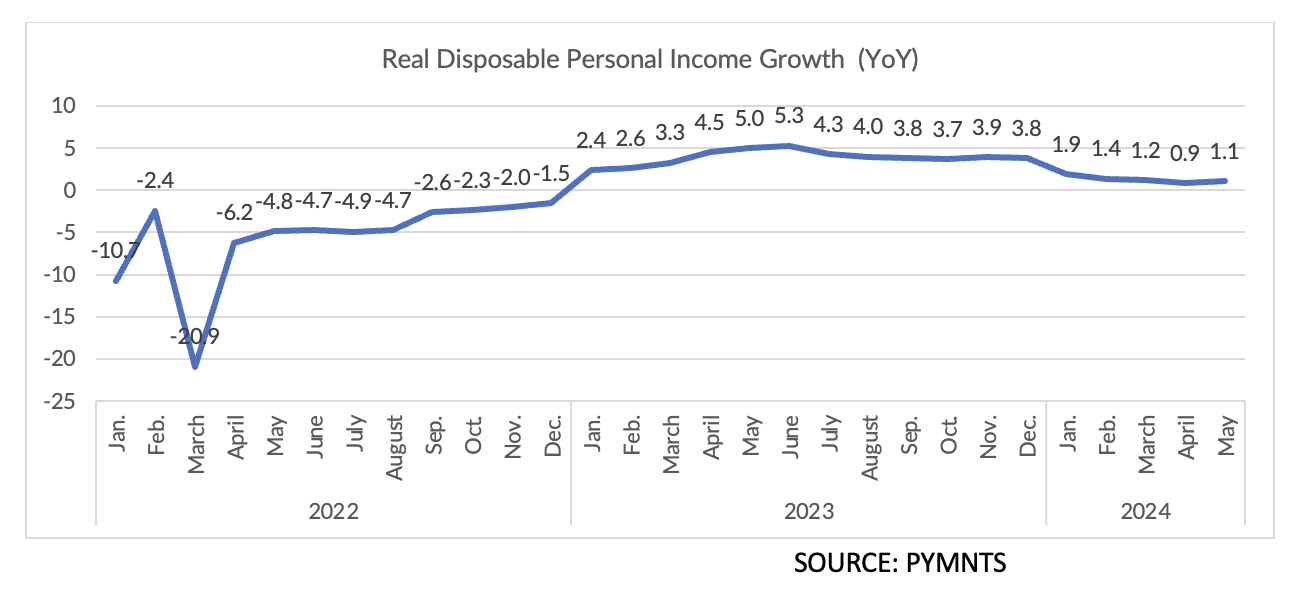
The newest reading on gross domestic product (GDP) — for the second quarter, only a few weeks in the books — shows a quickening pace of growth.
And, yes, consumers are still spending, but the pace is slowing. Savings and disposable income growth rates are slowing, too, indicating that the 2.8% annualized pace seen in the second quarter may be tough to sustain.
In the Thursday (July 25) release by the Bureau of Economic Analysis, the headline 2.8% growth rate represents a jump from the 1.4% pace seen in the first quarter.
The engine, as always, has been consumer spending, which was 2.3% higher on an annualized basis. But that’s a bit slower than the 2.5% rate seen in the first quarter.
The data show that disposable personal income increased $186.3 billion, or 3.6%, in the second quarter, compared with an increase of $240.2 billion, or 4.8%, in the first quarter. Real disposable personal income — which would be adjusted for inflation — increased 1%, compared with an increase of 1.3% in the first quarter.
The BEA reported that personal savings were $720.5 billion in the second quarter, compared with $777.3 billion in the first quarter. The personal saving rate has seen a bit of headwind as well. In the quarter that has just passed, personal saving, as a percentage of disposable personal income, was 3.5% in the second quarter, compared with 3.8% in the first quarter.
The slowdown in real disposable income growth is apparent in the chart below, as tracked by PYMNTS Intelligence. We’re a long way away from this time last year, where, as the chart details, disposable income was increasing in the mid-single-digit percentage points.

The GDP data lends further indication of the pressures that have been showing up in various earnings reports these past few weeks — and, particularly, among lower income, lower credit-scoring consumer brackets.
As has been seen from reports from the banks, such as JPMorgan and Citigroup, and more recently from Visa, there’s been some pullback in those consumer groups, and overall payments-related activity has been moderating.
Headed into the current year, we found that consumers were depleting their savings roughly every four years — and we’re lapping the savings surge of the pandemic. Inflation has also been part of why consumers have been digging into their savings to meet the demands of everyday financial life.
Given the fact that disposable income growth is slowing, and the savings rate as a percentage of that disposable income level has been inching downward, too, the implication here is that the savings cushion that has been a critical component of “oiling” the economic engine noted above — where consumers have been able to get what they want, when they want, and keep the economy humming — is less dependable than it once was.